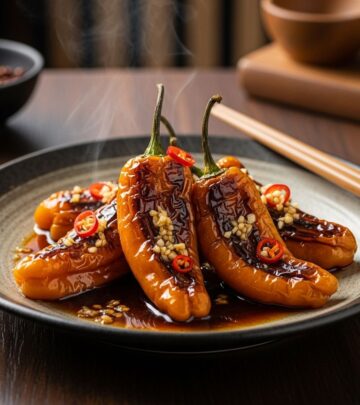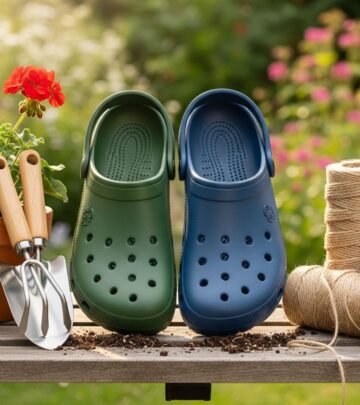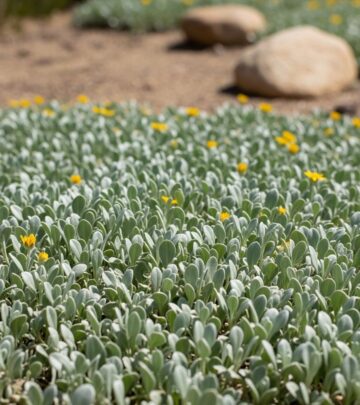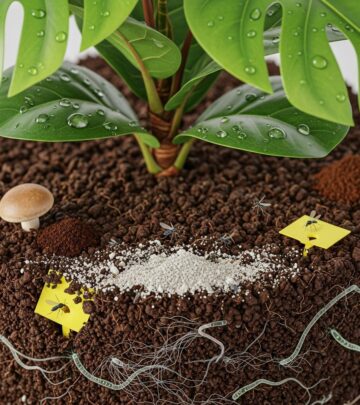Purple Flowering Vines: 11 Best Varieties For Your Garden
Vibrant and eye-catching, these purple-flowered vines add elegance and color to any vertical space in your garden.
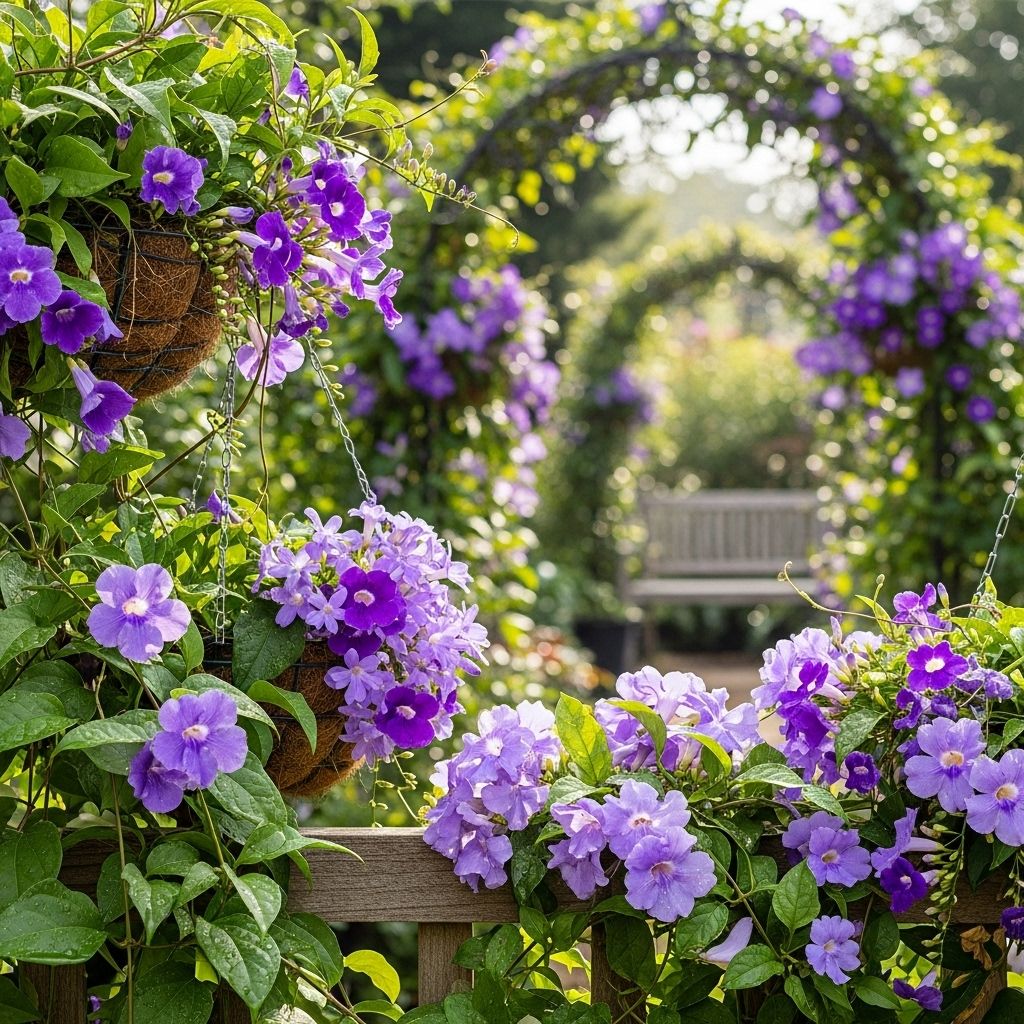
Image: HearthJunction Design Team
11 Stunning Vines With Purple Flowers to Elevate Your Garden
Vertical gardening offers a vibrant twist on traditional landscapes, and few choices are as dramatic as vines draped with purple blooms. Whether you’re seeking a fast-growing annual or a perennial showstopper, there’s a purple-flowered vine to fit almost every climate and garden style. In this comprehensive guide, we introduce 11 of the best purple-flowering vines, including care tips, notable features, and important details for safe gardening. Let’s climb into the world of these captivating plants!
Why Choose Purple-Flowered Vines?
Purple is a color that evokes richness, creativity, and tranquility in the garden. Vines with purple blooms offer:
- Visual Interest: Their striking color stands out against green foliage and hardscapes.
- Vertical Beauty: Perfect for fences, trellises, pergolas, and arbors, vines help maximize garden space.
- Wildlife Attraction: Many purple-flowered vines attract pollinators like bees, butterflies, and hummingbirds.
- Diverse Growth Habits: Options range from slow-growing specimen plants to fast annual screens.
1. Dutchman’s Pipe (Aristolochia gigantea)
| Sun Requirements | Full sun to partial shade |
|---|---|
| Plant Height | 15 to 30 feet |
| USDA Hardiness Zones | 10–12 |
Dutchman’s Pipe is an eye-catching and unusual choice, boasting large, pipe-shaped blooms in a maroon-purple hue with yellow-green bases. The flowers are conversation starters, lending a unique flair to walls and trellises. This vine thrives in moist, well-drained soil and does poorly in drought conditions.
- Best Use: Wind around fences, trellises, or pergolas for a dramatic effect.
- Warning: All parts of the plant are toxic if ingested, so keep away from pets and children.
2. Hyacinth Bean Vine (Lablab purpureus)
| Sun Requirements | Full sun |
|---|---|
| Plant Height | 10 to 25 feet |
| USDA Hardiness Zones | 10–11 |
The hyacinth bean vine features lush, burgundy stems, broad leafy canopies, and clusters of pale purple flowers that mature into deep purple bean pods. It is a vigorous yet non-invasive grower, ideal for rapid coverage of vertical structures without taking over the garden.
- Best Use: Grows quickly over arbors, trellises, and fences for instant impact.
- Edibility Warning: Young pods and some parts are edible when prepared properly, but mature or dried beans are toxic.
3. Wisteria (Wisteria spp.)
| Sun Requirements | Full sun |
|---|---|
| Plant Height | 10 to 30+ feet |
| USDA Hardiness Zones | 5–9 (varies by species) |
Renowned for their fragrant, pendulous clusters called racemes, wisterias create a cascade of violet to blue-purple blooms in spring. Their twisting, woody stems are a classic sight draping over pergolas and gateways.
- Leaf Features: Pinnately compound leaves with medium to dark green leaflets.
- Edibility Warning: Only the flowers are edible raw; all other parts (especially seeds and pods) are highly toxic if ingested.
- Pruning Tip: Regular pruning keeps wisteria in check and maximizes flowering.
4. Purple Bell Vine (Rhodochiton atrosanguineus)
| Sun Requirements | Full sun to partial shade |
|---|---|
| Plant Height | Up to 12 feet |
| USDA Hardiness Zones | 10–11 (grown as annual elsewhere) |
Purple Bell Vine offers dramatic heart-shaped foliage and unique purple bell-shaped flowers from spring through fall. A climber that’s low-maintenance and easy to manage, it’s ideal for trellises and containers alike.
- Pollinator Friendly: Attracts bees, butterflies, and hummingbirds all season.
- Growth Habit: Vigorous but not invasive, it won’t crowd out neighbors.
- Care: Needs consistent moisture and prefers morning sunlight with afternoon shade for best blooms.
5. Blue Cathedral Bells (Cup and Saucer Vine, Cobaea scandens)
| Sun Requirements | Full sun |
|---|---|
| Plant Height | 10 to 24 feet |
| USDA Hardiness Zones | 9–11 (often grown as annual) |
This quick-growing vine produces 2-inch flowers that start pale green and mature into vivid violet-purple “cups” sitting inside a saucer-like calyx. Perfect for rapidly covering arbors, fences, or pergolas, it adds an enchanting touch to any vertical structure.
- Growth Rate: Fast and exuberant, ideal for summer screens.
- Best Use: Showcase over trellises or entryways for a whimsical look.
6. Clematis (Clematis spp.)
| Sun Requirements | Full sun to partial shade |
|---|---|
| Plant Height | 6 to 20+ feet (varies by cultivar) |
| USDA Hardiness Zones | 4–9 |
Clematis offers a wealth of purple-blooming cultivars with star-shaped or bell-shaped flowers in shades from soft lavender to deep plum. They’re ideal for smaller spaces, as many varieties are compact and easily trained.
- Key Varieties: ‘Jackmanii’, ‘The President’, ‘Etoile Violette’
- Pruning: Select pruning method based on the variety for best blooms.
- Soil Preference: Prefers cool roots and rich, well-drained soil.
7. Passionflower Vine (Passiflora species)
| Sun Requirements | Full sun |
|---|---|
| Plant Height | 10 to 30 feet |
| USDA Hardiness Zones | 6–10 (varies by species) |
Famed for their intricate, frilly blooms and sometimes edible fruit, passionflowers come in purple, blue, or violet hues depending on the cultivar. Their exotic appearance makes them a favorite among pollinators.
- Wildlife Benefits: Attracts butterflies (notably the gulf fritillary) and bees.
- Growth Habit: Some species are aggressive, so provide room to roam or prune regularly.
- Fruit Warning: Only fruit from edible species is safe to eat.
8. Lavender Trumpet Vine (Clytostoma callistegioides)
| Sun Requirements | Full sun to partial shade |
|---|---|
| Plant Height | 8 to 15 feet |
| USDA Hardiness Zones | 9–11 |
This vigorous climber produces large, trumpet-shaped, lavender-purple flowers throughout late spring and summer. The nearly evergreen vines are a great option for quick coverage and create a lush, tropical ambiance.
- Drought Tolerance: More tolerant than many other vines on this list, though still appreciates occasional watering in dry spells.
- Best For: Masonry walls, arbors, or chain link fences.
9. Morning Glory (Ipomoea purpurea, ‘Grandpa Ott’ and other hybrids)
| Sun Requirements | Full sun |
|---|---|
| Plant Height | 10 to 15 feet |
| USDA Hardiness Zones | 2–11 (grown as annual most places) |
Morning glories burst open with deep purple trumpet-shaped blooms each morning, fading away by afternoon. These fast-growing annuals reseed readily and provide cheerful color from summer to frost.
- Growth Habit: Rapid annual climber, ideal for temporary screens or flower fences.
- Self-Seeding: Can become weedy; deadhead to control spread if needed.
10. Purple Coral Pea (Hardenbergia violacea)
| Sun Requirements | Full sun to light shade |
|---|---|
| Plant Height | Up to 15 feet |
| USDA Hardiness Zones | 9–11 |
Native to Australia, Purple Coral Pea is loved for its clusters of violet pea flowers and glossy foliage. The blooms arrive in late winter or early spring, brightening the landscape when many other plants are dormant.
- Soil and Moisture: Tolerates a wide range of soils and some drought once established.
- Growth Rate: Moderate grower, makes a good fence cover or groundcover.
11. Climbing Snapdragon (Asarina scandens)
| Sun Requirements | Full sun to partial shade |
|---|---|
| Plant Height | 6 to 8 feet |
| USDA Hardiness Zones | 9–11 (grown as annual elsewhere) |
With trailing or climbing stems and charming snapdragon-shaped purple flowers, this annual vine is perfect for containers, baskets, or low fences.
- Best Use: Cascading from boxes or climbing up trellises for whimsical color.
- Bloom Time: Summer to fall in most climates.
Comparison Table: Purple-Flowered Vines At a Glance
| Vine | Height | Sun Needs | Zones | Remarks |
|---|---|---|---|---|
| Dutchman’s Pipe | 15–30 ft | Full–partial | 10–12 | Exotic; toxic |
| Hyacinth Bean | 10–25 ft | Full sun | 10–11 | Edible pods; toxic beans |
| Wisteria | 10–30+ ft | Full sun | 5–9 | Fragrant, toxic |
| Purple Bell Vine | Up to 12 ft | Full–partial | 10–11 | Pollinator magnet |
| Blue Cathedral Bells | 10–24 ft | Full sun | 9–11 | Fast, annual/biennial |
| Clematis | 6–20+ ft | Full–partial | 4–9 | Many cultivars |
| Passionflower | 10–30 ft | Full sun | 6–10 | Exotic, some edible |
| Lavender Trumpet | 8–15 ft | Full–partial | 9–11 | Tropical effect |
| Morning Glory | 10–15 ft | Full sun | 2–11 | Annual, reseeds |
| Purple Coral Pea | Up to 15 ft | Full sun | 9–11 | Winter bloom |
| Climbing Snapdragon | 6–8 ft | Full–partial | 9–11 | Best in containers |
Growing Tips for Healthy, Flowering Purple Vines
- Provide Support: Install trellises, arbors, or netting before planting.
- Choose the Right Spot: Most purple-flowered vines prefer full sun, but some tolerate partial shade.
- Water Consistently: Keep the soil evenly moist until established. Drought can reduce flowering for most species.
- Feed Regularly: Use balanced, slow-release fertilizer during the growing season for lush foliage and blooms.
- Prune Annually: Remove spent flowers, shape the vine, and control size according to each species’ needs.
- Watch for Pests: While many vines are vigorous, aphids, spider mites, and fungal issues can occur. Inspect regularly.
Safety and Toxicity Considerations
While many vines with purple blooms are safe for ornamental use, several species contain toxic compounds in their leaves, stems, seeds, or pods:
- Dutchman’s Pipe, Hyacinth Bean, and Wisteria are toxic if ingested.
- Always supervise children and pets in gardens with potentially toxic vines.
- When in doubt, consult reputable plant resources before consuming any part of a flowering vine.
Frequently Asked Questions (FAQs)
Which purple-flowered vine is best for fast coverage?
Hyacinth bean vine, blue cathedral bells, and morning glory offer rapid growth for quick screening and seasonal impact.
Are any of these vines fragrant?
Wisteria is famous for its sweetly scented flowers. Some clematis cultivars also have a pleasant fragrance.
Can I grow these vines in containers?
Yes, several species—particularly clematis, climbing snapdragon, and purple bell vine—thrive in large containers as long as they have support to climb and plenty of sun.
Do purple-flowered vines attract pollinators?
Absolutely. Purple bell vine, passionflower, wisteria, and morning glory are all known to attract butterflies, bees, and hummingbirds to the garden.
How do I prevent my vine from becoming invasive?
Choose species known for non-invasive growth (such as clematis or purple bell vine) or prune vigorously and deadhead seed pods to prevent unwanted spread, especially with morning glory and wisteria.
Final Thoughts
Vines with purple flowers deliver drama, elegance, and wildlife value to vertical garden spaces. With options ranging from classic favorites like wisteria to lesser-known treasures like purple bell vine, there’s a climber for nearly any garden style and climate. Choose varieties that suit your local conditions and design vision, and you’ll enjoy a living tapestry of vibrant purple blooms season after season.
References
Read full bio of medha deb

